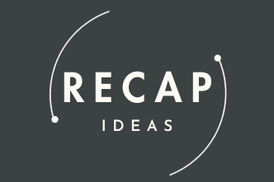Crafting AI Guidelines for Your Organization: A Step-by-Step Guide
The first step toward implementing responsible AI in your organization is to create a set of guidelines. Small and medium-sized organizations can use this post to think through what to include in their AI guidelines so everyone can be on the same path to ethically navigating the world of generative AI. With these guidelines in place, venturing into AI can be both transformative and grounded in responsibility.
HOME DISPLAY CATEGORY
Adrienne Schafer
12/7/20235 min read


If you're a small or medium-sized organization thinking about your first step toward implementing generative AI use in the workplace, a good place to start is by discussing and agreeing upon internal AI guidelines. This ensures transparent, ethical, legal, and effective use of this technology, versus haphazard or even secretive use that can expose your organization to risks. (You don't want to see your organization's private information on the news if an AI tool gets hacked.) This guide outlines the elements your organization should consider when developing comprehensive AI guidelines for successful AI integration.
Why AI Guidelines Matter
Implementing AI guidelines isn't just about harnessing technology; it's about navigating a new era in business ethics and legal compliance. This all sounds particularly dull, but without effective AI guidelines, employees can feel fearful of using AI - a tool that can lead to innovation, growth and efficiencies. AI guidelines are key to leveraging generative AI for success and avoiding potential pitfalls.
Elements to include in your organization's AI guidelines.
Purpose statement
This is where you think broadly about what you want out of AI in your organization. Think about where you sit in terms of scales. Are you more risk averse, or more risk friendly? Do you want to be as integrated as possible, as quickly as possible with AI tools, or do you want to be more methodical about adoption? Every organization has its own culture and values, refer to yours for this section. Keep this statement in mind as you write the rest of your guidelines since you'll want to be internally consistent. For example, if your goal is for your organization to be maximally innovative but you tell people they can't use a tool unless it's fully vetted by IT security which can take months, that is likely to stifle the creative experimentation you state that you want, so you may want to adjust your initial statement to be more about cautious experimentation instead of driving innovation.
Ethical Principles in AI Usage
At the heart of responsible AI guidelines are the principles of fairness, transparency, and accountability. Ensuring that your AI guidelines state the basic principles and ethical standards your organization wants to adhere to.
Consider the ethical implications and legal boundaries around using AI tools trained on copyrighted materials. Determine whether your organization is comfortable using such tools under specific conditions, such as avoiding direct references to copyrighted content, or if you prefer exclusively using tools trained on non-copyrighted data.
Legal Compliance and Risk Management
As of early January 2024, some of the major legal standards related to AI include the EU's, GDPR and some state-level consumer protection laws that apply to automated decision-making. Considering these is a critical component of AI guidelines. Check with your legal counsel to ensure your AI use or systems can remain compliant with various legal frameworks. Many of these are still evolving.
Address the handling of sensitive data, including private, secure, personal, and legally protected information. Establish protocols for inputting data into AI tools, ensuring confidentiality and compliance with legal standards. Initially, you might limit entering specific types of information in AI tools unless they have been vetted through cybersecurity.
The deployment and use of AI technologies require careful consideration. As there is not yet a universal standard, each tool requires a review of its data governance policies. One shortcut to understanding these is that generally, tools that are for enterprise use, tend to have more stringent data security policies in place. Things to watch for, include how they use the information you enter - do they use it for training? Do they store it for later?
Diversity, Equity, Inclusion, and Accessibility (DEIA)
Acknowledge that AI tools contain biases, potentially leading to the exclusion or inclusion of certain groups. Your guidelines should address how your organization will use AI to promote DEIA, ensuring that these technologies are leveraged to create a more inclusive and equitable environment. You might consider cases where you would explicitly avoid the use of AI, for example, you might disallow the use of AI image generators to misrepresent the diversity of your organization. You might consider cases where you would explicitly encourage the use of AI, for example, creating materials that are more accessible to people of different ages or creating materials in different languages.
AI Output Refinement and Review
AI can help people work faster and get better outcomes. However, it is also prone to hallucination, confidently stating incorrect information. To combat this, AI outputs should always be reviewed by a person before being deployed. This may be something you want to state in your guidelines. Another level of consideration would be whether the human reviewer has expertise in that topic. For example, if someone uses AI to translate a text from English to Spanish, the human reviewer should be a Spanish speaker. This guideline can help avoid embarrassing errors due to AI hallucinations.
Innovation and Experimentation
Define your organization's stance on innovation. Are you aiming to be at the forefront of adopting AI in new and inventive ways, encouraging experimentation, or is your focus on integrating AI tools as and when they become necessary and proven? Use this section to guide users on how cautious they should be about trying new AI tools. Will there be an approved list, or will they be free to experiment using their best judgment?
Focused Approach
Consider your key stakeholders – be they customers, employees, or even environmental concerns like forests – and use these as a focal point to guide and drive your AI adoption strategy. Ensuring that AI initiatives align with stakeholder needs and values can enhance engagement and effectiveness. For example, you might suggest AI experimentation happens with the goal of a minimal environmental impact, or you might say AI experimentation should be done to drive customer satisfaction.
Transparency
Determine the level of transparency you want to adhere to for different audiences. If you create an AI image or text content, should that be noted? What if you only use AI for part of the output? Do you need to generally state to a client or stakeholder that you use AI as part of your work? Do you assume it's a tool like Google which wouldn't typically require you to declare? Some organizations have found it useful to encourage employees to share internally how they used AI so others can learn from it.
Regular Review and Auditing
Effective AI guidelines include regular reviews and audits of AI systems. It's crucial to continually assess the ethical and operational performance of your AI tools. Fortunately or unfortunately AI and regulations are evolving quickly, so the guidelines you create should also have a note about how often they'll be reviewed and/or updated.
Decide whether your organization prefers an experimental approach to using AI or a more methodical strategy, focusing on AI tools that demonstrate the greatest efficiency and effectiveness in achieving your goals.
Launching your Guidelines
You can begin shaping your own AI guidelines today. Here's a prompt that incorporates the elements we've discussed. One final element to consider is supporting employees in the adoption of these guidelines through training. Instead of just sending a document out via email, show them how to use tools in approved ways - most people are just getting started. Recap Ideas can provide these trainings and customize them to fit your organization's guidelines.
Feeling overwhelmed at the idea of creating AI guidelines for your organization? Reach out for guided assitance.
Want to dig deeper?
We provide AI instruction and coaching for individuals, teams and organizations. Learn more about our custom AI consulting services.
